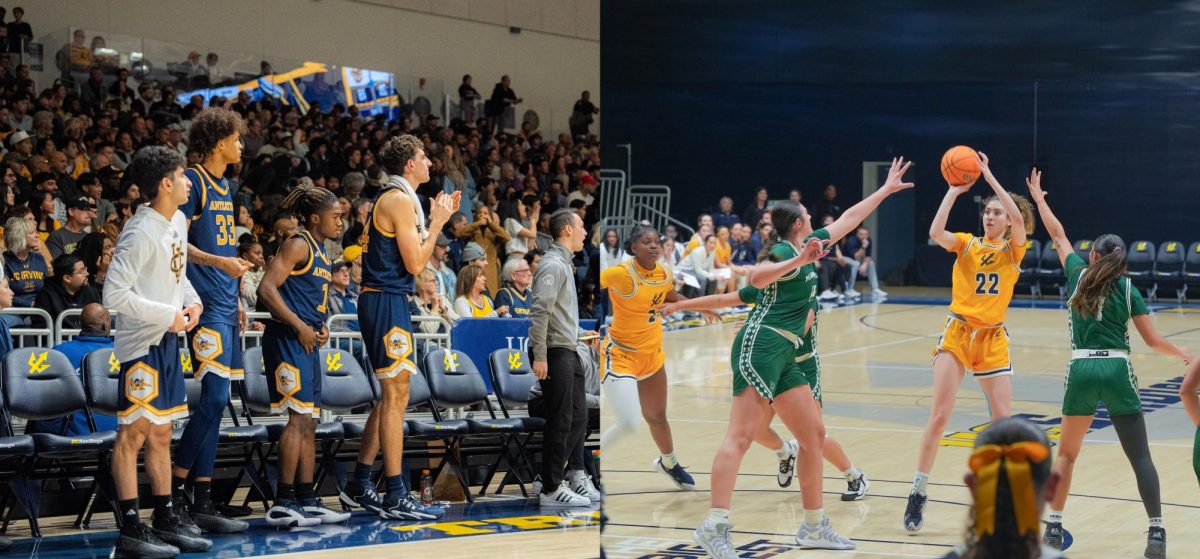Editor’s note: The following is a satirical article for The DisreGuardian, a series of articles published annually for The Guardian’s April Fool’s issue. Features will resume publishing normal content next week.
In our April 1 issue, known as The Disreguardian, many of my colleagues published satirical articles, but I chose to analyze one of corgi racing’s greatest and most controversial races. Since its publishing, it has garnered acclaim, and I have been heralded by an unnamed member of the public as a journalist. However, it may shock you to know that not everyone felt this way.
Many of our staff members were skeptical of the article, stating that they were hesitant or just outright saying that it was a terrible idea. Their names are listed below:
- Kurt
- Wyatt
- Ryan
- Vishnu
- That guy who talks too much about hockey
- That freshman whose name I haven’t learned yet
- That one person who doesn’t show up to the meetings and criticized the idea on Slack instead
- Senji
Some even tried to stop the publication, coming to our office the Sunday that our newspaper was being produced, but they failed to foresee that I had no plans whatsoever and would be in the office crocheting and distracting others. In that moment, seeing them peer through the locked door while I made faces, formed the letter “L” with my fingers, and flashed it at them, I felt betrayed. Though I’d been stabbed in the back, my pain couldn’t compare to what Oda Nobunaga felt in 1582.
Picture this. Your name is Oda Nobunaga. You are a daimyo on the cusp of unifying Japan. You own most of Honshu. You reformed the Japanese meritocracy. You have some legitimate children. You got a great job as a shogun through nepotism. Life is good.
Along came Akechi Mitsuhide. He was your polar opposite when you hired him; he had no illegitimate children, he’s not a nepo-baby, and worst of all, he doesn’t own any land and has to pay rent. You’ve given him so much — you gave him land, you gave him connections, you gave him mistresses. You thought you were a cool boss, but now his men surround you at Honno-ji, and you are forced to commit seppuku.
Oda and I have a lot in common. If I was a Japanese warlord, we might be best friends, and conversely, if he was a UCSD student, we might be best friends as well. However, I lack the necessary people skills and killing-people skills it takes to run a shogunate, and he lacks the necessary GPA and extracurriculars it takes to be accepted to UCSD, so even if we lived in the same era we probably wouldn’t have many mutual friends. While that may be the case, it was still important to me to see the city that he once ruled and the site of this demise.
On April 1, mere hours after the original article was published, I boarded a direct flight to Kyoto International Airport from San Diego. When I arrived in Japan, I was shocked to learn that the people still spoke the same language that Oda spoke all those years ago; it was like he was still alive and wasn’t couped to death. It seemed fitting that I would experience Japanese culture, cuisine, and nightlife, which were so meaningful to Oda, and that I would be able to visit the site where the famed coup occurred. All of my research about corgis led me to this moment; this was my destiny. But destiny doesn’t write good itineraries.
Upon further examination of Tripadvisor, I found out that Honno-ji only had a rating of 3.5 stars out of 5, according to 191 reviews. This placed the temple 165th out of 2,110 things to do in Kyoto, right behind “Geisha and Maiko Makeover Experience in Kyoto Gion Aya.” With 164 better things to do and only two days, it only made sense to skip the Honno-ji Temple. Also, everything in feudal Japan was made out of wood, so the temple burned down a decade later and was rebuilt elsewhere. My decision to skip the temple was also due to financial reasons. After consulting The UCSD Guardian’s in-house accounting team, featuring some of our school’s most available accounting majors, I was informed that I could not claim my visit to the temple or my trip as a whole as a work expense on my taxes.
For the rest of the time in Kyoto, I couldn’t help thinking about the temple. It was only 15 minutes away, but it felt so much further, mostly because I refused to pay for a pass on the Kyoto Metro. At the end of the day, I ended up going to Kiyomizu-dera Temple, one of Kyoto’s coup-less temples. At that moment, as I sat staring at the sunset over the city, I thought about whether I should’ve visited Honno-ji instead. The answer was clearly no. Tripadvisor was right — Kiyomizu-dera was beautiful and deserved its 4.5-star rating.
I thought about the article, the impact it had on lives around my beloved campus. This journey began from the social media account of a team that I’ve never cared about, and to conclude my journey, I wanted to feel the joy I first experienced watching those corgis race once again. I pulled out my phone and scrolled through my saved reels until I found the race that had captivated me only months prior. While my heart was full watching it all unfold again, my international high-speed data plan was empty, and I couldn’t load the latter half of the reel. As the sun set on the Land of the Rising Sun, I knew that my work had been completed, and that I had finally hit my article quota for the quarter.










